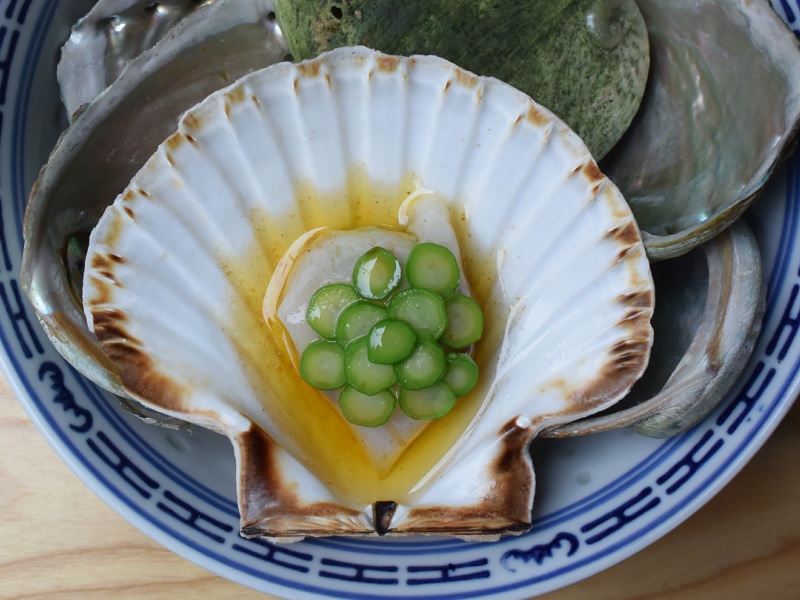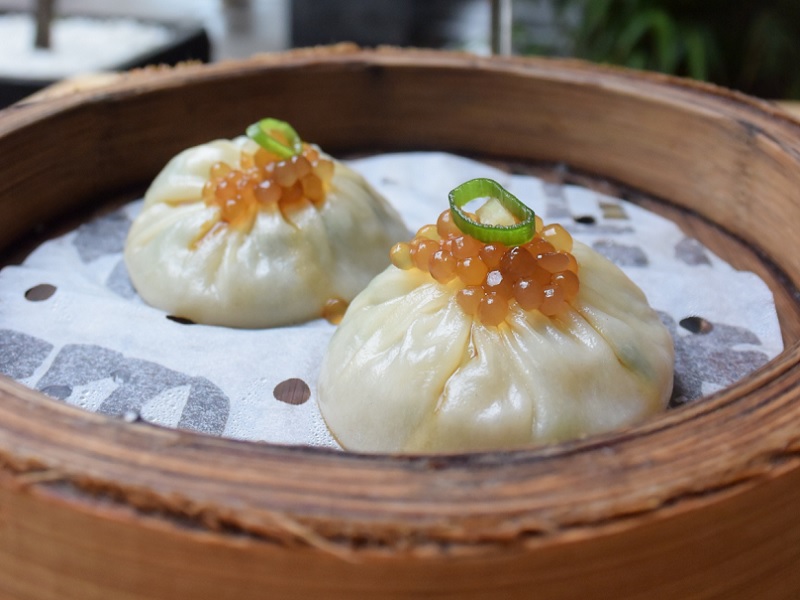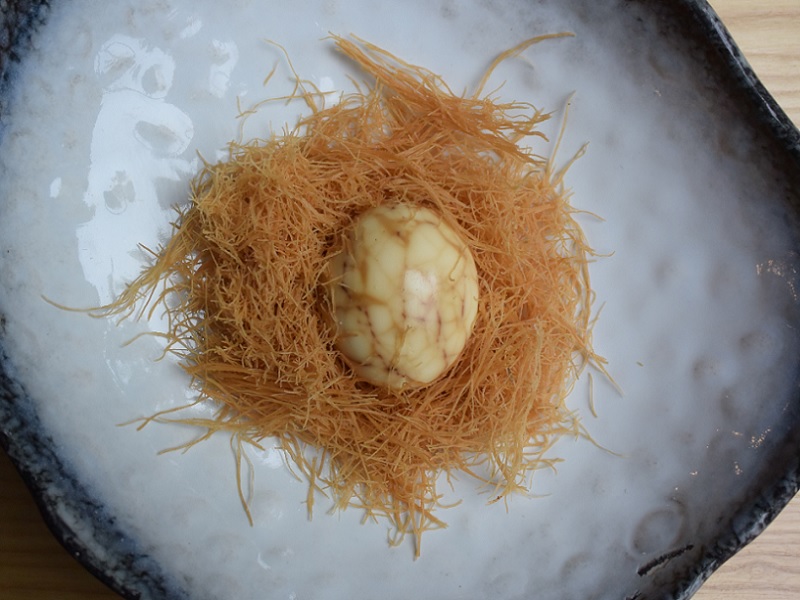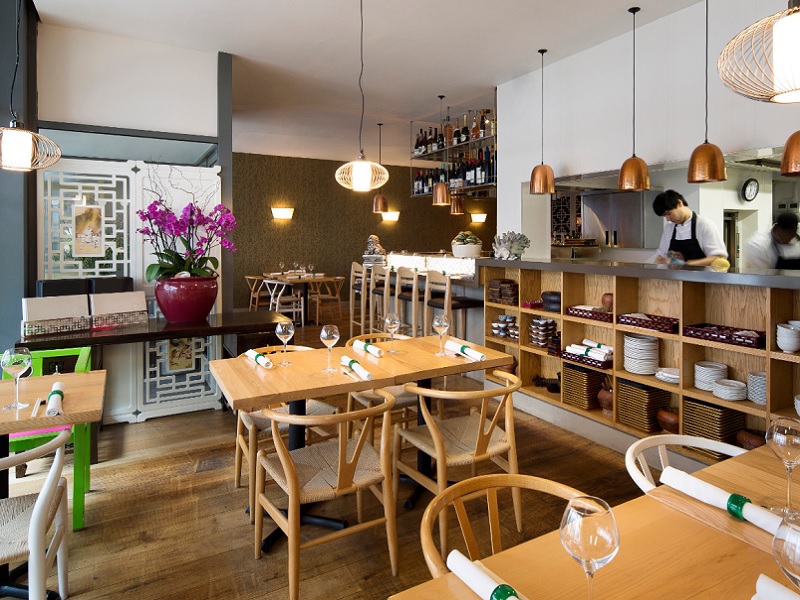Chef Andrew Wong of A Wong, London
by Qian Leung
@ 10 Jan 2018

In the 1880s, Chinese seamen who brought tea, ceramics, and silks settled in London, giving rise to a Chinatown. By the 1950s, a hundred Chinese restaurants were open, a growing industry which provided work for a wave of agricultural labourers from Hong Kong. Today, the Chinese community is largely made up of second or third generation British Chinese. What is Chinese food like in London? Let’s hear the thoughts of a chef.
Located in Pimlico in central London,
A Wong specialises in regional Chinese cuisine presented in avant garde ways. “My parents ran an old-school Cantonese restaurant and takeaway, complete with dragons and bright coloured sauces,” says Chef Andrew Wong, 36. “I worked in their kitchen as a teenager but always said I would never want to be a chef.” When his father passed away, he stepped up to help his mother run the restaurant, eventually spending some time travelling around China, learning about traditional culinary methods. For a Shanghai steamed dumpling, a traditional recipe is used for the dough, rolled out for a skin that is thinner than the standard dumpling, and filled with soup and ginger infused vinegar.

Tea egg – a play on the ubiquitous street snack – is cooked till runny yolked instead of hard-boiled, scented with tea, and served on a bed of shredded filo pastry, satay powder, and 13-spice salt. Contrary to what people may assume, Wong thinks that the British Chinese food scene is very authentic, in fact, better than New York, Canada, and Europe. “The Chinese food scene in Hong Kong is changing massively,” says Chef Wong. “People now want to try new things and are pushing boundaries all the time.” The best dim sum he’s had was in highly innovative The 8 in Grand Lisboa, Macau. If you visited A Wong in the evening, you could try a menu named ‘Taste of China’, featuring cured scallop from Zhou dynasty, street tofu and gong bao chicken from Chengdu, red braised fermented fish belly from Anhui province, pulled lamb burger from Shaanxi, pomegranate salad from Xinjiang, and seared beef with mint, chilli, and lemongrass from Yunnan. Finish with a coconut water ice, or a lychee granita with orange sorbet and lotus roots.

To someone aspiring to follow in his footsteps, he recommends going into European kitchens first. “The level of organisation they have, the way they streamline everything that is conducive to the cuisine, that is something you can take with you into a Chinese kitchen,” says Chef Wong. “You’ll be working with different ingredients, but still have the mental capacity to do tasks in a highly organised fashion.” While the dining room of A Wong is bright and cheery, if you pushed through the folding screen door, a flight of steps would lead you down to a hidden dungeon cloaked in black, named Forbidden City bar. Drinks are inspired by regions across China, such as Peking, a champagne cocktail of orange bitters, Cointreau, and spun sugar sprayed with a dash of XO brandy, which encapsulates the extravagance of the Forbidden City, where in ancient times, one did not enter without bearing a gift for the emperor, or risk being killed. “To become a good chef, be hardworking, organised, and resilient; don’t have a chip on your shoulder,” says Chef Wong. “Be patient, and embrace monotony. Most importantly, be a nice person. Like with any job.”

Adapted from the Jan Feb 18 issue of Cuisine & Wine Asia.
 In the 1880s, Chinese seamen who brought tea, ceramics, and silks settled in London, giving rise to a Chinatown. By the 1950s, a hundred Chinese restaurants were open, a growing industry which provided work for a wave of agricultural labourers from Hong Kong. Today, the Chinese community is largely made up of second or third generation British Chinese. What is Chinese food like in London? Let’s hear the thoughts of a chef.
In the 1880s, Chinese seamen who brought tea, ceramics, and silks settled in London, giving rise to a Chinatown. By the 1950s, a hundred Chinese restaurants were open, a growing industry which provided work for a wave of agricultural labourers from Hong Kong. Today, the Chinese community is largely made up of second or third generation British Chinese. What is Chinese food like in London? Let’s hear the thoughts of a chef.


